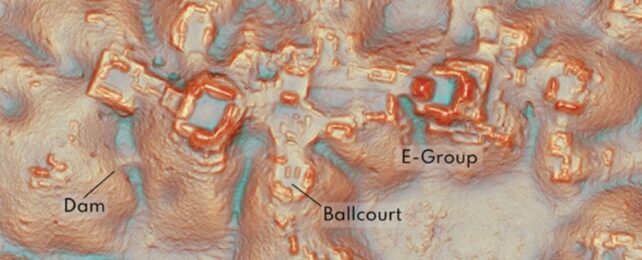
Rediscovered Ancient Mayan City Deep in Mexican Jungle Reveals Lost Civilization's Rich Complexity
An extraordinary discovery of an ancient Mayan city named Valeriana has come to light within the dense jungles of southeastern Mexico. This monumental find sheds new light on the Mayan civilization’s expansive reach and sophisticated architecture. The city's unearthing was almost accidental, triggered by a PhD student's exploration of lidar survey data—an advanced laser mapping technology that can reveal structures concealed beneath thick vegetation.
The discovery of Valeriana wasn’t a typical archaeological endeavor requiring grueling on-ground exploration. Instead, it was made possible through lidar, which operates by emitting laser pulses from an aircraft. These pulses bounce off the ground below and return to the sensor, creating a high-resolution map of any concealed terrain. For this city, lidar revealed sprawling complexes with pyramids, plazas, roads, and even sports courts—features that had remained hidden beneath jungle foliage for centuries.
Also Read:- Giddey’s Masterclass Performance Propels Bulls to Victory Over Grizzlies
- Golden Knights Face Off Against Kings Amid Strong Winning Streak
Archaeologists estimate that Valeriana could have housed between 30,000 and 50,000 inhabitants at its height from approximately 750 to 850 AD. This city’s population density and layout were surprisingly complex, with neighborhoods, religious centers, and causeways interconnecting different sectors. Two principal urban hubs were linked by expansive causeways and included two plazas with large pyramid temples, a court for a traditional ball game, and water reservoirs. This organized urban structure suggests that Valeriana was likely a political and cultural capital, with distinct social and religious spaces integral to Mayan life.
Historically, dense tropical regions were thought by Western scholars to be unsuitable for sustaining advanced civilizations. Yet discoveries like Valeriana contradict this view, showcasing the Maya’s ability to thrive in these environments. The Maya civilization created sophisticated infrastructure that included water reservoirs, which may have been crucial for supporting large populations despite fluctuating climate conditions. However, scholars believe that prolonged drought and environmental strain ultimately led to the city’s decline.
As remarkable as this find is, it’s just one of many that lidar technology has made possible in recent years. Before lidar, uncovering such hidden landscapes required extensive fieldwork and excavation, often with slow, painstaking results. Now, with its help, researchers have mapped about ten times more area in the Mesoamerican region within the last decade than they could have through traditional methods in a century. With lidar revealing more potential sites, archaeologists face the exciting challenge of studying these newly identified cities, though they may lack the resources to excavate them all fully.
Discoveries like Valeriana highlight the Maya’s extensive settlement patterns and sophisticated urban planning, redefining our understanding of this civilization’s past. This find doesn’t just add to the knowledge of a lost city; it broadens the perspective on how ancient societies in tropical regions innovated to build resilient, complex urban centers. In this modern age of exploration, technology continues to offer windows into the ancient world, with lidar mapping the hidden histories of civilizations that time and nature have obscured.
Read More:

0 Comments